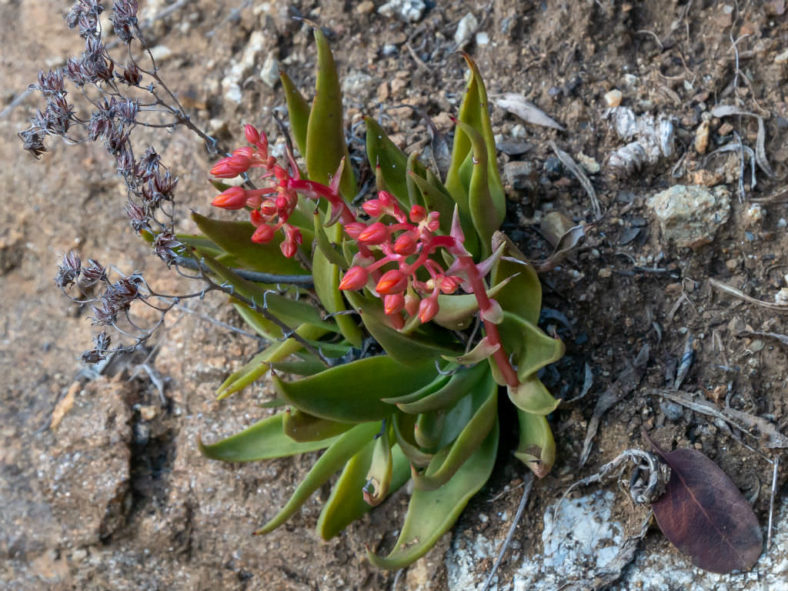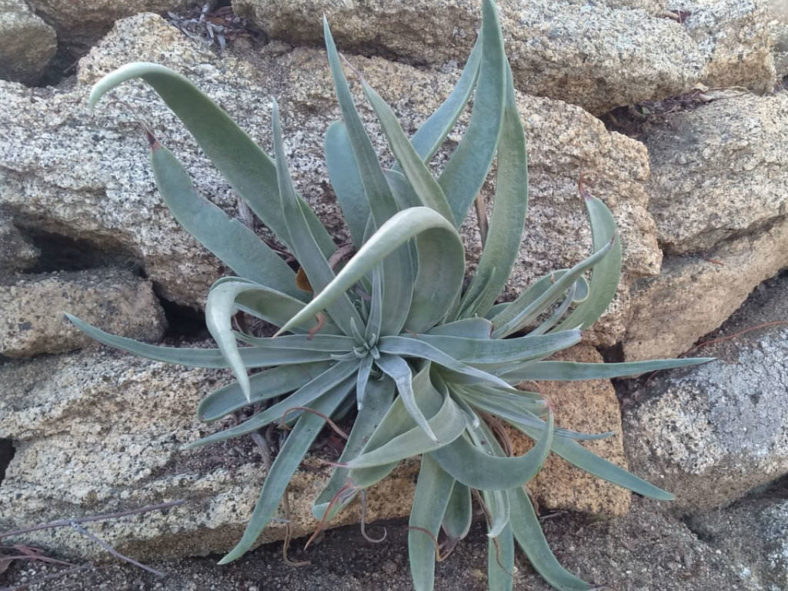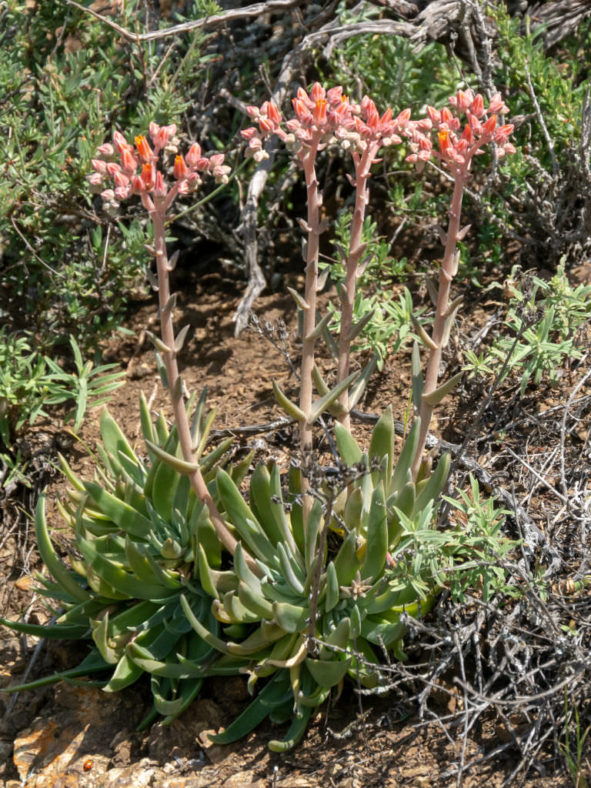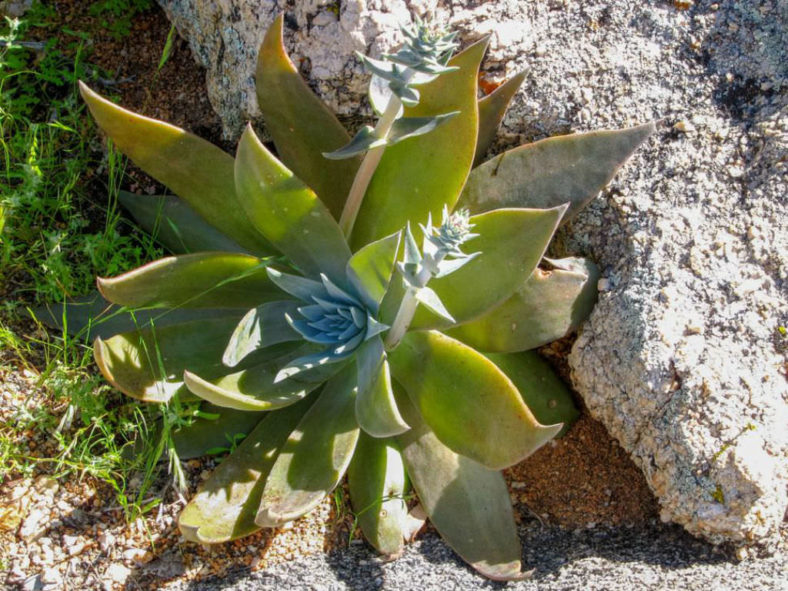Scientific Name
Dudleya lanceolata Britton & Rose
Common Name(s)
Lanceleaf Liveforever, Lance-leaved Dudleya, Southern California Dudleya
Synonym(s)
Cotyledon lanceolata, Echeveria lanceolata
Scientific Classification
Family: Crassulaceae
Subfamily: Sempervivoideae
Tribe: Sedeae
Genus: Dudleya
Origin
Dudleya lanceolata is native to the mountains of Southern California and Baja California, where it grows in rocky areas and slopes.
Description
Dudleya lanceolata is a succulent plant that forms rosettes of fleshy pointed leaves. The rosettes can grow up to 12 inches (30 cm) tall and 10 inches (25 cm) in diameter. The leaves vary in shape, from flat, spade-shaped to elongated. They are also variable in color, from pale green and darker green to red, sometimes having a light powdery coating. The leaves can grow up to 12 inches (30 cm) long and 1.6 inches (4 cm) wide. They are often shriveled under drought stress.
The stems are erect and bear a branching inflorescence with up to 20 flowers on each of its few branches. The flowers are yellow, orange, pink, or red, with pale green bases, and appear in spring and summer.

Hardiness
USDA hardiness zones 9a to 11b: from 20 °F (−6.7 °C) to 50 °F (+10 °C).
How to Grow and Care
Most of the habitats Dudleyas occupy become dry in summer. Therefore, it is important to cut off water to Dudleyas in your garden during the summer. Plants grown in sandy soils or containers are exceptions. They will accept infrequent summer watering as long as the soil drains well. The onset of fall or winter rains reawakens Dudleyas from drought-induced dormancy. Their shriveled leaves plump up quickly, growth resumes, and flowering occurs during the following spring or summer. These plants are amazingly resilient. If a portion of a colony sloughs off a cliff face or is uprooted by a burrowing animal, it can persist for months until soil contact is re-established. Species that naturally grow on ocean bluffs are also salt-spray tolerant.
Dudleyas have their share of disease and pest problems. However, if you can prevent Argentine Ants from introducing mealybugs or aphids to your Dudleyas, they will be healthier. Mealybugs nestle in the deep recesses of the leaves, and their feeding weakens the plants.
Learn more at How to Grow and Care for Dudleya.
Links
- Back to genus Dudleya
- Succupedia: Browse succulents by Scientific Name, Common Name, Genus, Family, USDA Hardiness Zone, Origin, or cacti by Genus
Photo Gallery
Click on a photo to see a larger version.


